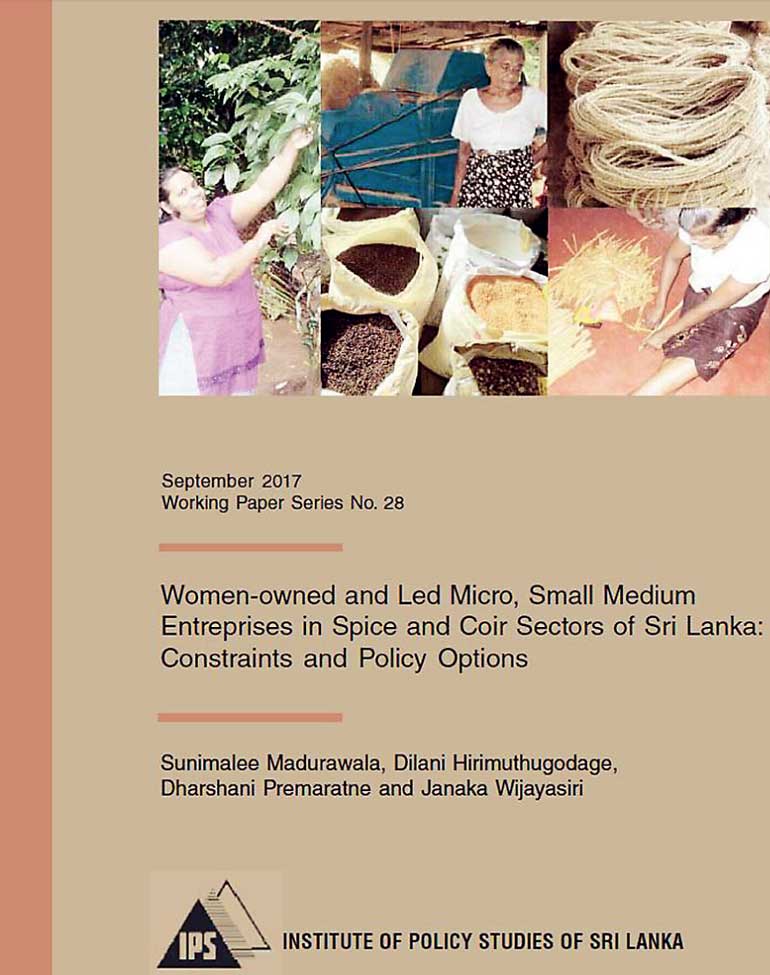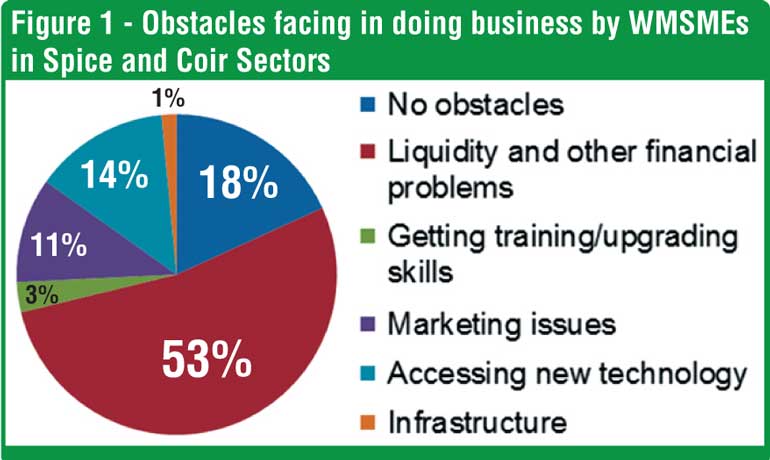
 An important avenue to promote inclusive and sustainable development includes accelerating gainful participation of Women-owned/led Micro Small Medium Enterprises (WMSMEs) in the economy. WMSMEs have been identified as the backbone of developing economies and constitute a major source of formal and informal sector employment of women. Therefore, it is important to strengthen this sector and improve the participation of these enterprises in the domestic and international markets.
An important avenue to promote inclusive and sustainable development includes accelerating gainful participation of Women-owned/led Micro Small Medium Enterprises (WMSMEs) in the economy. WMSMEs have been identified as the backbone of developing economies and constitute a major source of formal and informal sector employment of women. Therefore, it is important to strengthen this sector and improve the participation of these enterprises in the domestic and international markets.
Constraints facing WMSMEs in spice and coir sectors
In Sri Lanka, spices and coir are amongst the few industries that have high female participation. This policy brief highlights the main findings from the Institute of Policy Studies of Sri Lanka’s (IPS) study on Women-owned and led Micro, Small Medium Enterprises in Spice and Coir Sectors of Sri Lanka: Constraints and Policy Options. The objectives of the study were two-fold: to identify constraints faced by WMSMEs in Sri Lanka in operating and expanding their businesses including issues related non-tariff barriers in the regional markets; and to provide policy and program recommendations to reduce the identified constraints.
Figure 1 summarises the main obstacles faced by WMSMEs in doing business, based on a primary data collection.
- Access to finance: More than half of women ranked financial concerns as the biggest barrier to operating their businesses. While they have access to formal institutions, WMSMEs preferred to use informal arrangements to fulfill their financial needs. High interest rates, difficulty in meeting loan requirements such as providing suitable guarantors and collaterals, and lengthy loan processing time, uncertainty of making repayments due to seasonality of income, low outreach are some of the problems in accessing financial institutions in Sri Lanka. Informal money lenders were preferred over the formal financial institutes, despite the higher interest rates, mainly because of the flexibility and speedy loan disbursements, without much formal paper work.
- Skills, expertise and technology: Both spices and coir industries are traditional industries with a long history. Knowledge and expertise in these industries have been transferred from generation to generation. Access to new technology is poor, and most of the female entrepreneurs continue to use only the traditional knowledge and techniques in the production process. Low value addition observed among the WMSMEs is a result of low access to new technology. Women’s participation in training and skill development programs was also found to be low. Time constraints and unavailability of such programs in remote areas were highlighted as main reasons.
- nMarketing: Most WMSMEs are not linked to end markets and lack a good knowledge of them and their potential. Many admitted that they just sell their products to the traders in the nearest town or to those who visit the villages, due to their limited mobility. Moreover, they do not have a clear idea about the value chain in which they operate. WMSMEs do not have direct contacts with either retailers or exporters. Their access to end markets is also impeded by poor knowledge of product quality standards and processes including difficulties in compliance.
- Networking and information: Information gap was identified as one of the main barriers in spice and coir WMSMEs. Most of the female entrepreneurs interviewed for the study were not aware of the market price of their products, their end buyers and input suppliers, available financial and non-financial services offered by the government, business associations, NGOs or private sector. Poor networking also impeded obtaining such information; very few females participated in business associations.
- Infrastructure: In terms of infrastructure, there were mixed views on constraints they face when using transport, and accessing water, power, telecommunication and roads. The responses of the participants differed according to their geographical locations. Inadequate testing capacities and difficulties in obtaining standard certifications together with lack of mutual recognition of testing and standards have hindered these exports to South Asia despite the potential.
- Social: The study found that women are mostly engaged in activities in the lower end or up-stream parts of the value chains in both the sectors. Household responsibilities and lack of mobility were found to be the main reasons for women to concentrate in lower levels of the value chains. Most of the activities at the lower levels of value chains can be done as home-based businesses. This gives women the opportunity of staying at homes and the flexibility to attend household chores. Moving up the value chain requires greater mobility and interaction with other value chain actors, which would impede their ability to meet their household responsibilities. Moreover, social recognition of their contribution to the industry and country were low, especially amongst the cinnamon peelers.
Policy options
To provide better access to finance, the study states that it is crucial to design loans catering to the needs of WMSMEs, improve outreach of the formal institutions (through mobile services), commit to assisting WMSMEs, reduce administrative procedures, and provide alternative ways to build a credit with institutions.
While it is important to provide female entrepreneurs opportunities to participate in regional trade fairs and exhibitions to see the potential for value addition and new technologies, both public and private institutions can be drivers of new technologies. To increase their participation in trainings, they should be organised at the village level, targeting women. To increase their awareness of these programs, information can be disseminated through District Secretariat, Welfare Associations, local Chambers of Commerce, etc. while effective use of available information channels (television, radio, mobiles) can reduce the information gap.
Together with the local media, National Enterprise Development Authority, Chamber of Small and Medium Industries of Sri Lanka, and Women’s Chamber of Industry and Commerce among others can also help to lend recognition to these traditional industries and the women’s contribution. Their opportunity to network could be increased through forming collective groups at the village level. Various public and private institutions can also provide necessary assistance in terms of tax incentives and support services to improve the competitiveness of WMSMEs.
(This policy brief is based on findings from a study on ‘Women-owned and Led Micro, Small Medium Enterprises in Spice and Coir Sectors of Sri Lanka: Constraints and Policy Options’ carried out by Sunimalee Madurawala, Dilani Hirimuthugodage, Dharshani Premaratne and Janaka Wijayasiri. This publication can be purchased from Institute of Policy Studies of Sri Lanka (IPS) Head Office at 100/20, Independence Avenue, Colombo 07 or leading bookshops. For more information, contact Amesh Thennakoon l Publication Officer l Tel: + 94 - 11 - 2143107, 2143100 l [email protected] [email protected])

 An important avenue to promote inclusive and sustainable development includes accelerating gainful participation of Women-owned/led Micro Small Medium Enterprises (WMSMEs) in the economy. WMSMEs have been identified as the backbone of developing economies and constitute a major source of formal and informal sector employment of women. Therefore, it is important to strengthen this sector and improve the participation of these enterprises in the domestic and international markets.
An important avenue to promote inclusive and sustainable development includes accelerating gainful participation of Women-owned/led Micro Small Medium Enterprises (WMSMEs) in the economy. WMSMEs have been identified as the backbone of developing economies and constitute a major source of formal and informal sector employment of women. Therefore, it is important to strengthen this sector and improve the participation of these enterprises in the domestic and international markets.